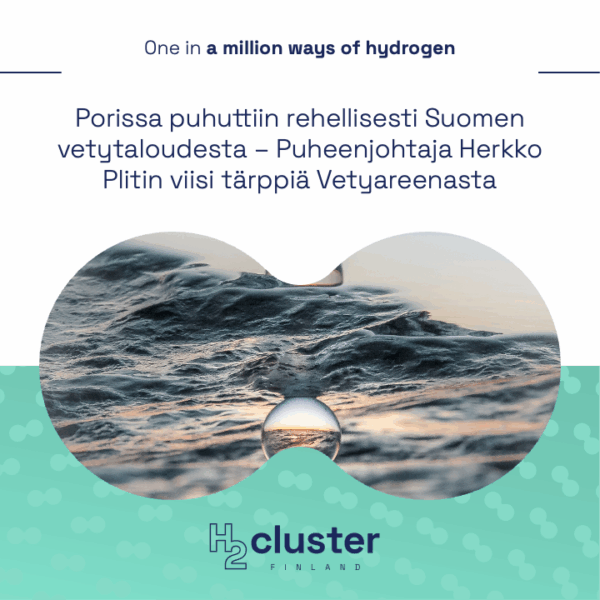UPM has what it takes to produce synthetic fuels: biogenic CO2 and electricity
Emission-free electricity and biogenic CO2 are key ingredients when building a power-to-x business. The forest industry company UPM produces both of them – in massive amounts. It could actually create a large part of the value chain for synthetic fuels and chemicals in-house.
“At UPM, we have all the assets needed to be successful in the emerging hydrogen economy. Unlike many others, we don’t need to acquire them from outside,” says Christian Hoffmann, director of energy transformation at UPM.
Let’s take a closer look at these assets. UPM is one of the world’s largest producers of pulp and paper. This makes it also a big user of residual biomass in energy production – and hence, a big emitter of biogenic CO2, which is CO2 from a sustainable source. Biogenic CO2 is needed as a source of carbon when making synthetic chemicals and fuels from green hydrogen.
UPM is also the second largest electricity producer in Finland with its own and partly owned hydropower and nuclear power assets. Along with biogenic CO2 molecules, emission-free electricity is the most important ingredient in all power-to-x processes. Very large quantities of electrons are needed to carry out the chemical process splitting water into hydrogen and oxygen.
Besides raw material and electricity: skills
“UPM is not only an experienced producer of emission-free electricity, but also a large consumer of electricity and a market player with deep expertise in electricity trading and optimization. This is why we have a very good understanding of the electricity markets both short and long term,” Hoffmann says.
Besides biogenic CO2, renewable and emission-free electricity, and experience in the electricity market, UPM has yet another asset at hand: the knowledge and expertise in fuel and chemical refining. The company already produces renewable fuels and chemicals from residues of pulp production and hydrogen in Lappeenranta.
“UPM’s Biofore Strategy includes a commitment to create renewable alternatives for fossil-based materials. Hydrogen economy is a perfect fit in this sense as we can make better use of our resources and assets to significantly reduce emissions and support transformation towards a low carbon society,” Hoffmann says.
Rules of the game are still unclear
Despite having most resources in-house, UPM has not yet announced any green hydrogen or other power-to-x projects.
“There are, of course, very interesting opportunities and we are discussing them with our technology partners. But we need to understand the rules of the game before we can make any investments. At the moment it is still unclear how the regulation and markets are going to develop,” Hoffmann says.
“We recognise the huge expectations that policies are creating for rapid growth of the hydrogen economy. Unfortunately, as a concrete example, it is still not quite clear what is the role of low-carbon hydrogen which can be produced for example with nuclear power. Such details are important and could create significant competitive advantage for Finland”, Hoffmann states.
Massive investment and a long-term commitment
Marko Janhunen, director of public affairs at UPM, considers the new government programme very promising for hydrogen economy in Finland.
“There is very much focus on enabling investments in hydrogen economy and cutting emissions in industrial operations. This means that carbon capture will get more attention than reducing transport emissions,” he says.
Traffic is, however, very important when considering investments in synthetic fuels and the whole power-to-x value chain. Janhunen points out that synthetic fuels are still significantly more expensive than biofuels or fossil ones, and the price difference has to be covered in one way or another. UPM considers that the move to a hydrogen economy will be gradual, and all sustainable means should be used to bring emissions down.
“If we decide to invest in power-to-x, there has to be a market and long-term visibility on regulation. We produce more than 10 million tons of biogenic CO2 per year in three pulp mills in Finland and two in Uruguay. To convert this much CO2 into synthetic fuels and chemicals would require long-term commitment and significant investments in facilities and electricity,” Janhunen says.
“The energy transformation will happen, but it won’t happen overnight.”



